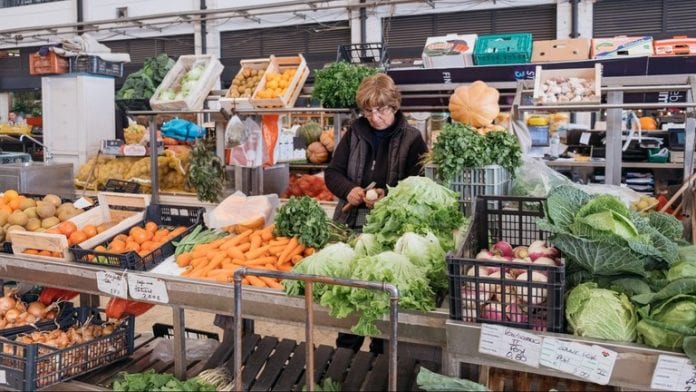As a woodworker, candle maker, painter, or jewelry maker, you’re always looking for ways to reach more customers and increase your sales. And while the internet is a great place for accomplishing this, there’s something incredibly powerful about selling in-person. This is why you need a presence at local markets and shows.
4 Helpful Tips for Selling at Local Markets

While the underlying techniques of selling remain constant across all platforms, there are some significant differences between selling in-person and online. When it comes to local markets – such as farmer’s markets, craft shows, and fairs – the following tips will help you stand out and generate positive results:
- Choose the Right Markets
The first step is the most important one: Choose the right market for your business/products. This will give you access to a primed audience that’s ready to purchase.

Farmer’s markets are great, but consider whether or not your products fit into this niche. While there are exceptions at larger farmer’s markets, many cater specifically to fresh produce and animal products. If you sell homemade goods, make sure there’s demand for what you’re putting out there. The opposite is true with craft shows. Just because the person in charge of the show offers a booth for you to sell produce, don’t assume that customers are coming to the show looking to buy produce. In either case, failing to consider the audience can result in wasted time and resources.
- Design a Compelling Booth
You have to sell your booth before you sell your products. In other words, convince people to approach your booth so they’re willing and able to engage with what you’re selling. This makes booth design and branding incredibly important.
According to PosterGarden, the signage is vital. The correct signage draws people in and promotes brand visibility from a distance. If you plan to attend lots of markets and shows, order a high-quality custom banner. When combined with other marketing and design elements, a sleek banner will help cement your brand as professional, reputable, and compelling in the eyes of customers.
- Display Products Correctly
Visual merchandising is an integral component of successful selling at local markets and shows. Here are a couple of things to keep in mind:
- Don’t feel like you have to display everything. Too many products will make your booth feel crowded – something that will overwhelm potential buyers. Try displaying a few of your best-selling products – and just a couple of each item. When someone purchases an item, you can replenish it with additional stock.
- Have some variety in how you display items. In addition to placing items on your booth table, consider hanging products at and even above eye level. This forces customers to look around (and provides nice visual relief)

- Have the Right Items on Hand
You never want unnecessary friction to slow down the sales process or prevent a customer from buying. While it takes some experience to understand the nuances of selling at fairs, shows, and markets, here are some basic pointers to help you with your first event:
- Have bags, packaging, and gift wrap on hand. This will ensure people have everything they need to make a purchase.
- Accept as many different types of payment as possible. In addition to having cash on hand, invest in a POS system with a mobile card reader. This will let you accept debit and credit payments.
- There will always be people who want to know more about your brand. Have business cards and signage on hand to direct shoppers to your website, social media profiles, and online sales platforms. You’ll be surprised by how many leads you can collect by simply asking people to opt-in to an email address or follow you on Facebook.
Diversifying Your Revenue Streams
It’s never wise for a business to be dependent on a single stream of income for sustenance. Whenever possible, look for ways to generate multiple sources of revenue. You can do this by adding a new product or service, but it can also be done by opening up a new sales channel for your existing products. If you currently sell online, try local markets as a way of earning extra income. It could amplify your sales to a significant degree.









